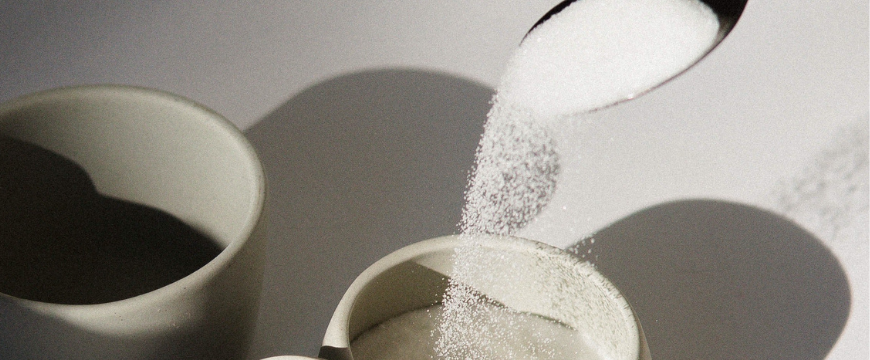



Have you ever flipped over a packet and read the ingredients list? I guarantee you sugar will be there. Check the ingredients list for anything ending in 'ose' (glucose, sucrose, fructose, lactose, maltose). These are all forms of sugar, as are honey, agave, molasses and syrups like corn and rice syrup. The higher up the ingredients list these are, the more sugar the product contains.
Why is sugar bad?
It all boils down to a naturally occurring carbohydrate called fructose. Added sugar is high in fructose, which can overload your liver.
Before sugar enters the bloodstream from the digestive tract, it is broken down into two simple sugars: glucose and fructose. Glucose is found in every living cell on the planet. If we don’t get it from our diet, our bodies produce it.
Fructose is different. Our bodies do not produce it in any significant amount and there is no physiological need for it. The thing with fructose is that it can only be metabolised by the liver in insignificant amounts.
This is not a problem if we eat a little bit (such as from fruit) or after we have just finished an exercise session. In this case, the fructose will be turned into glycogen and stored in the liver until we need it. The problem comes in the amounts we are eating and the fact our liver can only store a certain amount. Anything extra, our liver will dump into our bloodstream as fatty acids. These fatty acids react with triglycerides and form the hard dense cholesterol that can clog our arteries and contribute to cardiovascular disease.
How can we cut down our sugar consumption?
Commit to a period of time with 1-2 pieces of whole fruit per day and no additional sweet food. It's difficult initially and if you’ve been consuming a lot of sugar, you may experience headaches and other withdrawal symptoms. Go easy on yourself, dial back your physical activity, and opt for gentle walking or yoga as your body adjusts.
Drinking plenty of water and “crowding out” the sugar cravings with nutritious foods such as leafy greens, avocados, nuts and seeds will help.
What about alternative sweeteners?
DO NOT use artificial sweeteners. Artificial sweetener is the worst kind of 'sugar' you can consume, even worse than white processed sugar! Artificial sweeteners are often found in soft drinks and various other foods and marketed as a dieting aid, artificial sweetener increases the risk of developing Type 2 diabetes in the same way sugar does. So, stay away from artificial sweeteners as much as possible. You won't be gaining any benefits and will only be adding unnecessary chemicals to your diet.
Raw sugar is a slightly better option, but better still are natural sweeteners like natural maple syrup and honey. Ensure your maple syrup isn't the synthetic 'flavoured' kind because this hasn't got the mineral content that natural maple syrup has. Honey should be as unprocessed as possible, try to find a good raw honey to take advantage of the health benefits!
How much sugar can I be eating per day?
The World Health Organisation(WHO)'s recommended: